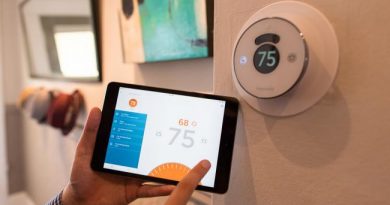Solar Tax Credit: Everything a Homeowner Needs to Know – Credible News
Energy Disrupter
Our goal is to give you the tools and confidence you need to improve your finances. Although we receive compensation from our partner lenders, whom we will always identify, all opinions are our own. Credible Operations, Inc. NMLS # 1681276, is referred to here as “Credible.”
More homeowners are installing solar energy systems and other forms of renewable energy like small wind turbines and geothermal heat pumps to reduce the reliance on fossil fuels, cut down on greenhouse gas emissions, and potentially pay a lower electric bill.
In most real estate markets, homes equipped with solar panels can increase your home’s value.
While there are many long-term benefits to going solar, the upfront costs can be expensive. Thankfully, you might be able to qualify for a solar tax credit to offset some of the cost.
Here’s what you need to know about the federal solar tax credit:
What is the federal solar tax credit?
Homeowners and businesses can claim the federal solar investment tax credit (ITC) when installing a new solar photovoltaic (PV) system. The solar ITC currently applies to qualifying installations made before Dec. 31, 2023.
First and second homes are eligible for this credit in addition to other capital improvements.
The solar tax credit is nonrefundable meaning you cannot get a tax refund for any amount greater than your tax liability, but you can carry over any unused amount of the credit into the next tax year.
Tax deductions vs. tax credits
Tax deductions, like the mortgage interest deduction, reduce your taxable income, resulting in a smaller tax liability.
Tax credits, on the other hand, provide a dollar-for-dollar reduction in the amount of income tax you owe.
| Tax deduction | Tax credit |
| Figured at the beginning of your return | Figured at the end of your return |
| Reduces the amount of income you have for tax purposes | Directly reduces the amount of money you owe in taxes |
The value of the solar tax credit
According to the Center for Sustainable Energy, the average solar electric system costs between $15,000 and $25,000 before any tax credits and rebates.
The value of the solar energy credit depends on the installation year for your system. For system installations occurring in 2021 or 2022, homeowners can receive up to 26% of eligible costs as a federal tax credit.
The table below shows the maximum federal tax credit. State and local governments may also offer solar tax credits for additional savings.
| Installation year | Maximum solar tax credit |
| 2019 or earlier | 30% |
| 2020 to 2022 | 26% |
| 2023 | 22% |
| 2024 or later | 0% (subject to change) |
Calculating your potential tax credit is fairly simple as you claim a percentage of the upfront cost for the solar panel system purchase and installation.
If your tax liability on your 2021 taxes is less than $5,200, such as $3,000, you can claim the credit difference on next year’s tax return. In this instance, the carryover credit is $2,200, which can be used to reduce the income taxes on your 2022 federal tax return.
The current tax credit for solar panels and system installation is set to expire at the end of 2023. Unless Congress extends the credit as it has previously, installing a system in 2024 or later won’t qualify for this federal investment tax credit.
So, if you’re considering a solar PV system, plan on installing it sooner rather than later.
A cash-out refinance can help you fund major home improvements, like a solar energy system. Be sure to look at as many lenders as possible when shopping around for rates. Credible makes finding a great deal easy — you can compare all of our lenders and see prequalified rates in as little as three minutes.
Find My Loan
No annoying calls or emails from lenders!
Qualifying for the federal solar tax credit
You’ll need to meet certain eligibility criteria to qualify for a federal solar tax credit, but the requirements are relatively flexible. They include:
- A solar PV system installed by Dec. 31, 2023
- The system is located at your primary or secondary home
- You own the system and purchased it with cash or financing
- The system is in use for the first time
Vacation homes may only qualify for a partial credit reflecting the amount of time you live at the property. For example, living at the property for three months means you can claim 25% of your total credit.
Rental properties can’t receive a solar panel tax credit, however they may qualify for a similar business credit instead if you use the property as a residence.
Qualifying equipment
The solar tax credit can apply to these equipment purchases:
- Solar PV panels or PV cells
- Solar batteries
- Balance-of-system equipment (such as inverters, wiring, and mounting equipment)
- Energy storage devices
- Contractor costs
- Sales tax on any of the above expenses
The equipment can be used for a rooftop solar system or a non-rooftop setting but must provide electricity to your home.
Equipment for solar lease agreements don’t qualify since you won’t own the solar power system at the end of the payment period.
Qualifying property types
You can install qualifying systems on these primary or secondary residences:
- Single-family homes
- Condominiums
- Cooperative apartments
- Mobile homes
- Manufactured homes conforming to federal standards
- Houseboats
You must be the owner of the system or contribute to the costs of the system to qualify for a solar tax credit. As a renter, you won’t qualify for the credit if your landlord installs a solar PV system since you don’t own the system.
Learn More: Should You Refinance to Pay for Home Improvements?
How to claim the solar tax credit
You can claim the federal solar tax credit when you complete IRS Form 5695 for residential energy credits. This form uses details from your Form 1040 or Form 1040NR federal income tax return.
You can expect this step-by-step process to claim the solar credit:
- Calculate total system cost: Includes the purchase cost for qualifying equipment, contractor labor costs, permit fees, etc.
- Determine full-time or part-time residency: Secondary homes may only qualify for a partial credit corresponding to the number of weeks you live at the property.
- Include rebates and state tax credits: Utility energy rebates and state tax credits may reduce the federal tax credit.
- Claim nonrefundable tax credits: Other federal tax credits, such as the child tax credit, will determine if you have a carryover energy credit for the next tax year.
You report your total energy credit on Schedule 3 on your Form 1040. A tax preparer or online tax software can walk you through the process to claim an accurate solar tax credit.
Other incentives for going solar
The federal credit is the easiest solar tax incentive to qualify for but you might qualify for state and local solar tax incentives as well.
Most state and local credits and rebates won’t reduce your federal credit but may increase your federal taxable income since you’ll have less state and local income tax to deduct. These homeowner tax benefits make it easier to recoup the upfront costs of installing solar panels.
State tax credits
State tax credits reduce the amount of state income taxes you owe. Your federal income taxes can increase if you deduct less than $10,000 in state and local taxes on an itemized federal return.
Rebates
Local energy utilities and governments may offer one-time rebates for the initial purchase and installation cost of a renewable energy system.
The tax treatment is different for utility and government energy rebates:
- Utility rebates: Most rebates won’t increase your taxable income but can decrease the federal credit.
- State and local government rebates: Usually won’t increase your taxable income or decrease the federal credit amount.
These rebates can help you save money and improve your home value even if they potentially decrease your federal energy credit.
Solar renewable energy certificates (SRECs)
Some states require a minimum amount of the electric grid to come from renewable energy. Homeowners can earn solar renewable energy certificates by generating solar power and make money by selling the certificates to local utilities.
In most instances, SRECs are taxable income but don’t impact the federal solar credit.
Performance-based incentives (PBIs)
Performance-based incentives automatically pay owners energy credits per kilowatt-hour of production. Most incentive rates are set at the time of installation with a power purchase agreement. Homeowners don’t have to sell the credits to receive payment like energy certificates.
Original Source: https://www.credible.com/blog/mortgages/solar-tax-credit/
















